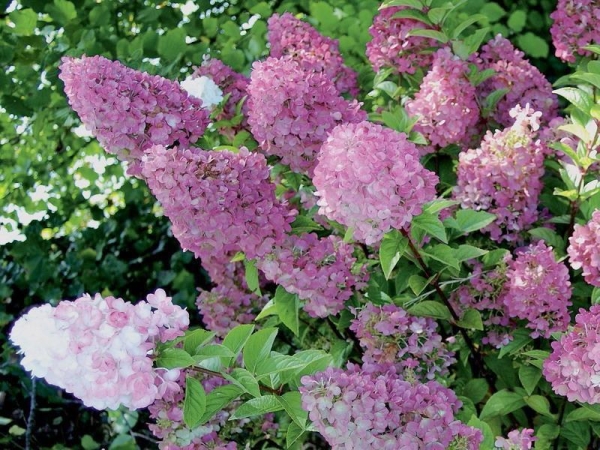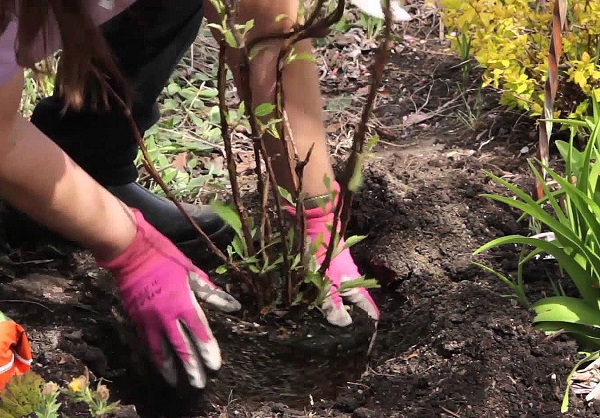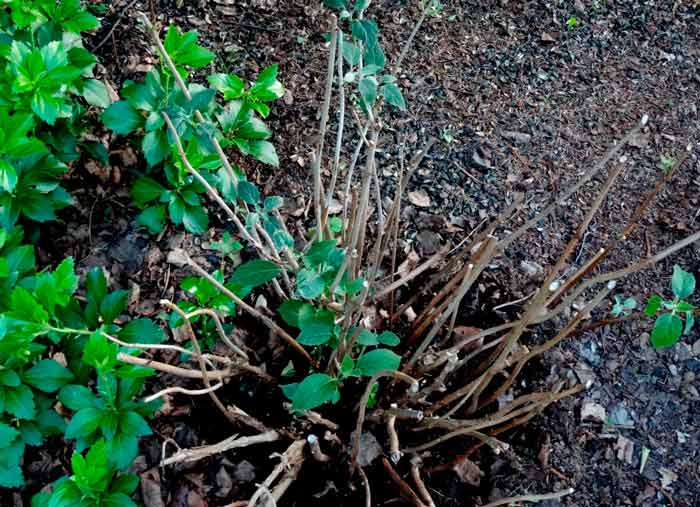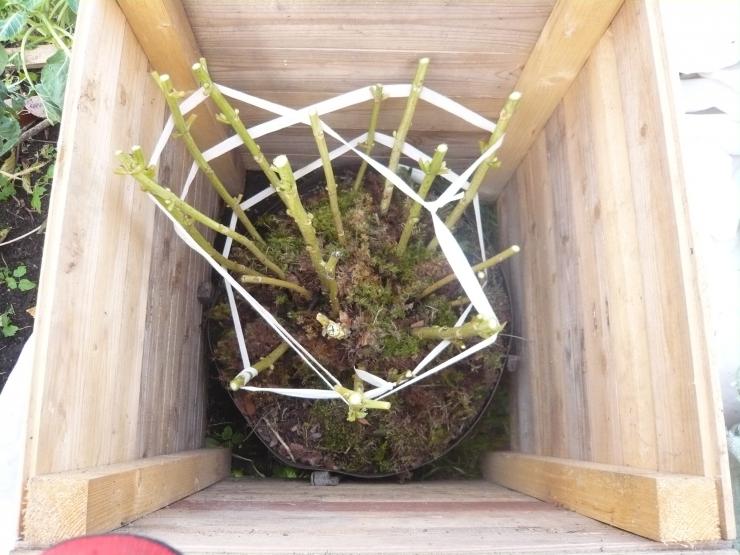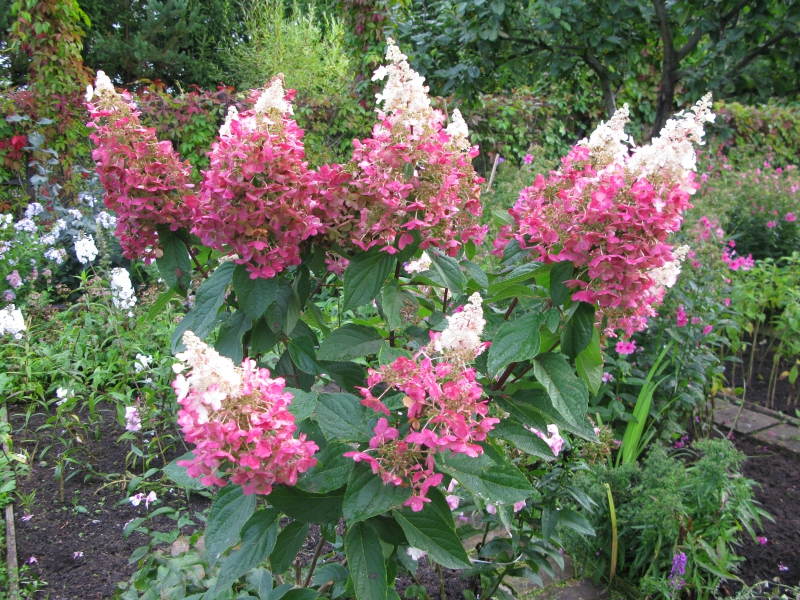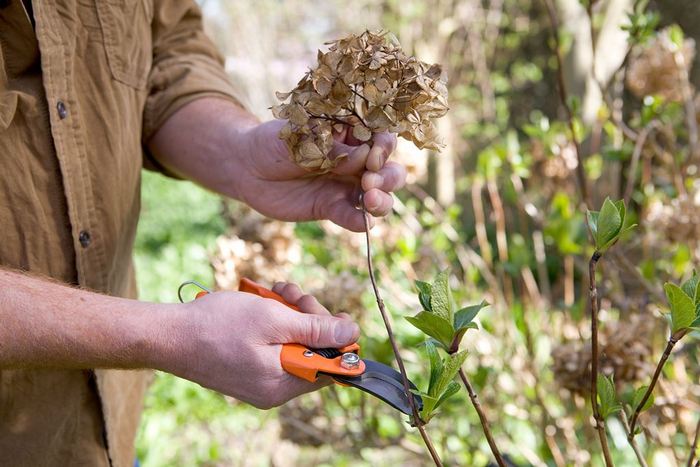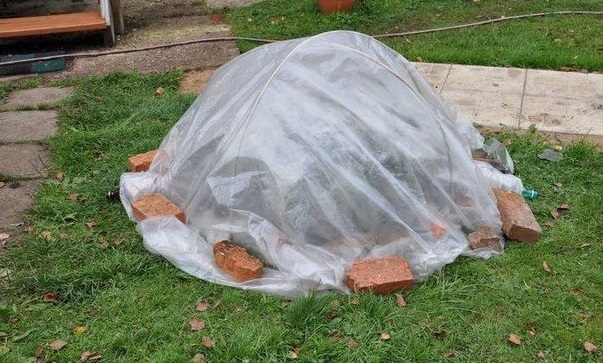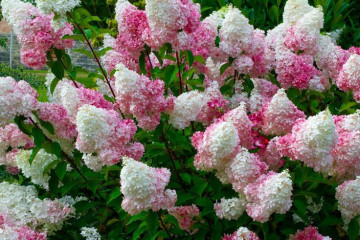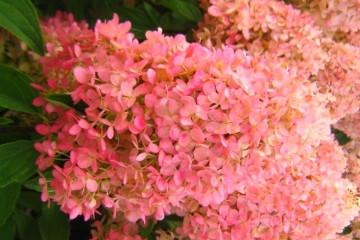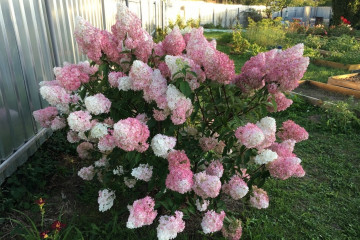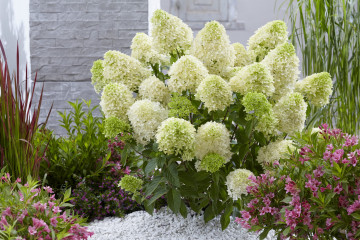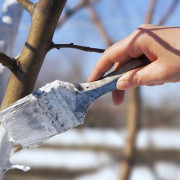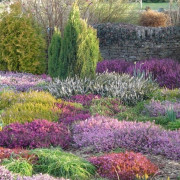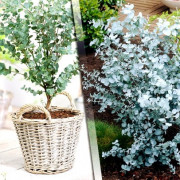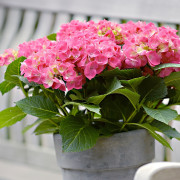Hydrangea Sunday Fraise (Hydrangea Paniculata Sundae Fraise) - description
Content:
Hydrangea Sunday Fries is a beautifully flowering shrub that will adorn any garden or infield. The lush and bright bloom of hydrangea will delight the eye and cheer up everyone who will admire it. The plant is not very demanding in care; even an inexperienced florist can grow it.
History of the origin of the variety
Hydrangea sundae fraise is the result of many years of work by the famous French breeder Jean Reno. This variety was introduced to the world in 2010, in a fairly short time it has become a favorite of many flower growers. The magnificent hydrangea fries has become an improved copy of the Vanilla Fries variety.
When creating a new type of shrub, Renault took into account all the shortcomings of the parent variety and got an almost perfect plant. In 2010, sundae hydrangea won a silver award at a flower show in Holland.
Description and appearance
Hydrangea Sunday Fries is a miniature shrub. Its height is 1.5 meters, width is 1 meter. The plant has a dense crown and slightly spreading branches. Stems are red-brown with a large number of oblong (up to 12 cm in length) dark green leaves. There are villi on the outside and inside of the leaves, most of them in the area of the veins. Hydrangea stems are very delicate, often drooping under the weight of inflorescences.
In the early days of summer, rather large inflorescences are formed on the bushes, resembling a pyramid in shape. Each inflorescence consists of small sterile flowers (about 2.5 cm in diameter) and very small fertile flowers, on which petals fall very early. The initial color of the flowers is white, but over time they turn pink, with the arrival of autumn and completely crimson.
Features of planting in open ground
In order for Sunday Fresh hydrangea to delight with its beautiful lush flowers every year, it is necessary to plant it correctly. This will require more than just planting a plant in the ground.
Important points that affect the growth and proper development of the shrub include: the planting period, a suitable place and preparation of the soil mixture. There should be no mistakes, otherwise the hydrangea will stop growing and die. Panic is guaranteed, since you will not be able to see it in all its glory.
Seat selection
Hydrangea paniculata Sunday Fries grows well in loose, acidic and fertile soil. The plant loves moisture and, due to the superficial root system, cannot get water from the low-lying layer of the earth. Therefore, it is important that the site is constantly moisturized, without excessive drainage properties. Hydrangea Sunday grows well in partial shade or shade, but you should not plant it in an open sunny area, otherwise the bush will slow down its growth and bloom poorly.
Land preparation
A month before planting the plant, it is worth preparing the soil. If it has a too loose structure, it is necessary to add peat or rotted manure.If the soil is alkaline, it is necessary to apply liquid manure, which will lead to soil acidification. The earth must be well dug up and a hole must be dug, 60-70 centimeters wide and 40-50 centimeters deep.
Landing
The most suitable time for planting hydrangeas in open ground is the beginning of May. The bushes are planted so that the distance between them is at least 1.5-2 meters. If it is necessary to create a hedge, the distance between the bushes can be reduced to 1-1.5 meters so that there is no gap between the grown bushes.
Stages of planting hydrangeas in open ground:
- A day before planting the plant, two buckets of settled water are poured into the hole so that it soaks the soil well;
- The hole is filled one third with rotted manure, garden soil and peat, all taken in equal proportions. You can also add half a glass of urea;
- Insert a seedling and straighten the roots in the hole;
- The hole is filled up (it is important not to deepen the root collar of the plant) and tamp the soil around the trunk;
- The planted plant is watered (it will take 5-10 liters of water per bush);
- The trunk circle is mulched for better moisture retention.
Reproduction of hydrangea
The shrub can be propagated in various ways: cuttings, dividing the bush, layering and seeds. The most common and convenient is grafting.
Cuttings
During spring pruning (April-June), young annual branches about 10 centimeters long are selected from the bush and cut at right angles. All leaves are removed from the bottom of the shoots, treated with a root growth stimulator and planted in prepared soil. During the rooting period, the planting is covered with a film. When the cuttings take root, the shelter is removed.
By dividing the bush
A hydrangea bush is dug up and divided into several parts. It is very important that each division has a kidney for further growth. Further, all parts of the bush are planted in a place prepared in advance for them.
Layers
Young shoots, which are not even a year old, are pressed to the ground and buried in. At the same time, it is important to leave the top on the surface at least 20 centimeters. When the shoots take root, they are separated from the parent bush and moved to another location.
Seeds
It is quite difficult to grow a hydrangea from seeds, therefore this method is not very popular among flower growers. Seeds can be planted for further seedlings, you can simply sow in open ground, scattering over a dug garden bed and sprinkling with sand.
Hydrangea care
Hydrangea is easy to care for. In order for the flower to please with lush flowering, it is important to adhere to certain rules of care.
Watering
Hydrangea is very fond of wet soil. The plant must be watered every day, 4-5 liters for each bush. Hard water should not be used for irrigation; it must be filtered or settled for five days. In a period of intense heat, the amount of water should be increased to 10-12 liters under one bush.
Loosening, weeding and mulching
The land around the trunk circle and between the bushes must be weeded, loosened and mulched in a timely manner. This should be done at least 2 times a month.
Loosening and weeding helps to retain moisture and oxygenate the roots.
Mulching will help keep the soil moist and keep weeds out. Pine needles, rotted peat or sawdust can be used as mulch.
Top dressing
Hydrangeas need top dressing, they are brought in every 14 days.Organic matter (liquid manure and bird droppings) and mineral complexes for hydrangeas are used as fertilizers. These dressings are introduced alternately, so the plant will perceive them better.
Pruning
Pruning is done in early spring, just after all the snow has melted. On young bushes, all stems are cut to the level of 2-3 pairs of buds; on adult plants, one pair is left. After pruning, a new shoot will grow from each bud, at the top of which an inflorescence will appear. Also, all thin and weak branches are removed, as well as stems that grow inside the bush. So, together with pruning, the bush is formed.
Transfer
It is better to transplant a bush every 5 years. Do it in the spring. If the plant is sick and grows poorly in the selected area, it must be transplanted urgently. The transplant is no different from the planting process.
Actions to be taken during the flowering period
This hydrangea variety has very thin and fragile stems, which often break under the weight of large inflorescences. To prevent this from happening, it is necessary to tie up all the branches and large inflorescences to the support. Also, during the period of active growth and especially flowering, it is necessary to feed the plant with organic and mineral fertilizers. In addition, it is important not to forget to remove all shoots and lateral growth in a timely manner.
Bush care during dormancy
When the shrub has stopped blooming, it is necessary to renew the layer of mulch around the trunk, thereby allowing the plant to be nourished and well prepared for winter. It is also necessary to remove all inflorescences and dry leaves. When the plant has shed all the leaves, it is worth cutting off all the tassels and shortening the stems in half.
Preparing for winter
Despite the good frost resistance, the root system of the plant is not very deep, so it is necessary to prepare the bushes well for wintering so that they do not freeze out during the cold season. To do this, all the bushes are well spud and cover the trunk circle with a thick layer of mulch. Next, you need to bend all the branches to the ground and cover with spunbond. The space between the branches can be filled with dry leaves.
If you adhere to all the recommendations for planting, cultivation and care, the Sunday Fries variety will be a wonderful decoration for any garden for a long time.

